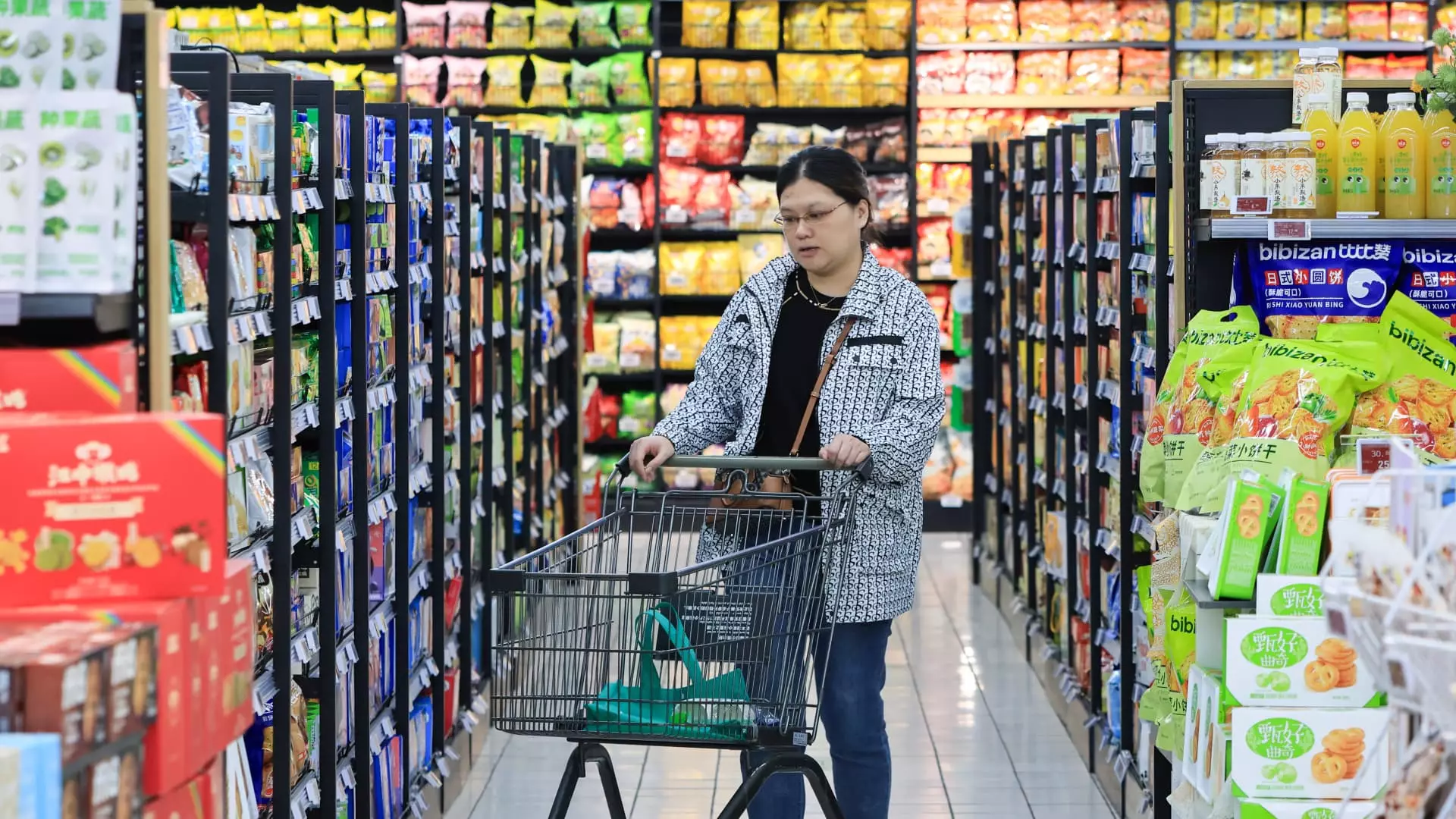China’s economy is currently facing a paradoxical situation marked by low consumer inflation and persistent deflationary pressures in wholesale prices. According to recent statistics released by the National Bureau of Statistics, consumer inflation in November hit a five-month low of 0.2% year-on-year, failing to meet analysts’ expectations of a modest increase to 0.5% from the previous month’s 0.3%. Simultaneously, core inflation, which excludes fluctuating food and energy prices, showed a slight uptick to 0.3%, but overall, the data reflects a concerning trend for the economy.
Notably, the modest growth in consumer prices belies the reality of sluggish domestic demand within China. While certain categories, such as pork and fresh vegetables, saw substantial price increases of 13.7% and 10.0% respectively, this does not translate into widespread inflationary pressures across the economy. The failure of consumer inflation to rise in accordance with market forecasts suggests that consumers are either reluctant to spend or facing challenges that limit their purchasing power. Despite various stimulus measures implemented since September—including interest rate reductions and support for both the stock and property markets—evidence indicates that these initiatives have yet to yield a significant lift in consumer confidence.
The situation becomes even more complex when analyzing the producer price index (PPI), which decreased for a staggering 26 consecutive months, experiencing a 2.5% year-on-year decline in November. This drop was less severe than the anticipated 2.8%, suggesting some stabilization, yet the reality of persistent deflation remains undeniable. Dr. Erica Tay, director of macro research at Maybank, points to the accumulating inventories of manufacturing inputs and finished goods as contributing factors to the ongoing price declines. This oversupply relative to demand underscores the challenges faced by Chinese manufacturers and raises questions about potential adjustments in production levels.
Further complicating the landscape is the backdrop of ongoing trade tensions, particularly with the United States. Analysts, including Becky Liu from Standard Chartered Bank, predict that deflationary trends in China may continue into 2025, drawing parallels to previous trade wars that similarly pressured inflation downward. The expectation of continued negative producer price inflation highlights how external economic factors aggravate domestic conditions. Moreover, the influence of U.S. trade policies poses additional risks, with Fitch Ratings adjusting its growth projections for the Chinese economy for both 2025 and 2026 in response to these threats.
Despite the gloomy inflation outlook, there are tentative signs of a recovery in certain segments of the economy. In October, retail sales outpaced expectations, and manufacturing activity showed signs of expansion for two consecutive months in November. These developments create a dichotomy where parts of the economy appear to be improving even as broader inflationary pressures remain low. As the Central Economic Work Conference approaches, expectations rise for new economic goals and stimulus strategies to navigate these contradictory signals, emphasizing the need for comprehensive measures to stimulate both consumer spending and industrial activity.
China’s economic landscape thus presents a multifaceted challenge for policymakers. While there are glimmers of potential recovery evidenced by retail and manufacturing growth, persistent inflation rates and negative producer price index figures highlight systemic issues. The challenge for Beijing lies in crafting policies that not only address inflation concerns but also stimulate demand among consumers who are currently hesitant to engage with the economy.
As the nation’s leadership prepares for strategic discussions regarding economic recovery and growth, it becomes imperative to devise actionable solutions that can provide both immediate relief and long-term stability to China’s economy. With external pressures looming and internal conditions fraught with uncertainty, navigating this delicate balance will be crucial for achieving sustained growth in the coming years.



Leave a Reply